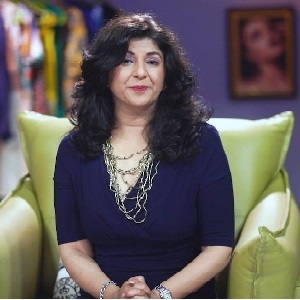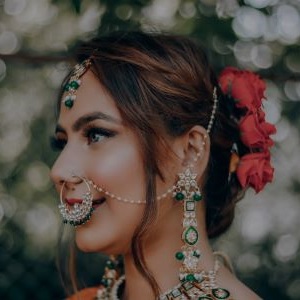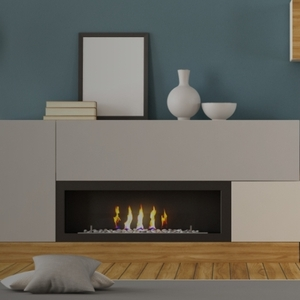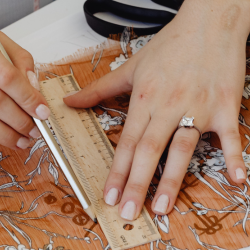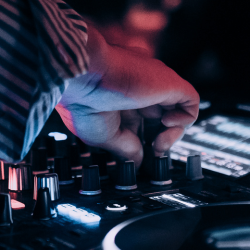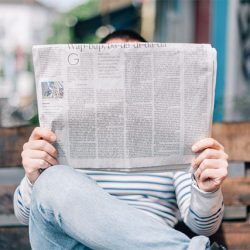The cornerstone of getting creative ideas to life in the fashion industry is fashion design sketches. Learning the art of sketching is essential to making your designs tangible irrespective of being a hobbyist or an aspiring designer. By practicing fashion design sketches, you build for yourself a deeper understanding of proportions, movement, and how different elements like pleats, ruffles, or layers resonate on the human body. They also act as a bridge for partnerships—helping pattern makers, tailors, and stylists grasp your concepts with clarity.
In this guide, we will learn about the essentials of fashion design sketches, including their types, tools, methods or techniques, and answers to frequently asked questions to assist freshers get started. Whether your goal is to design your first collection or just want to put your ideas on paper, knowing the basics of sketching can set the stage for your creative journey.
Table of Content
- What Are Fashion Design Sketches?
- Importance of Fashion Design Sketches
- Types of Fashion Sketches
- Tools You Need to Start Sketching
- How To Draw Fashion Sketches
- FAQs on Fashion Design Sketching
- What are the basics I should learn first in fashion sketching?
- Are there templates available for dress sketches for fashion designing?
- How can I create easy fashion design sketches at home?
- Do I need to draw models for fashion designing sketches?
- How long does it take to learn how to sketch like a fashion designer?
- What are the best tips on how to make sketches for fashion designing beginners?
What Are Fashion Design Sketches?
Fashion design sketches are visual representations of clothing and accessory ideas. They serve as a crucial tool in any fashion design course, helping aspiring designers communicate concepts, explore creative ideas, and experiment with shapes. These drawings play an important role in presenting ideas to customers, manufacturers, or partners, bridging the gap between vision and reality.
Role of Fashion Design Sketches
- Visualization: Before developing their tangible prototypes, sketches enable designers to visualize their concepts.
- Communication: They put forward design details like form, texture, and decorations to pattern designers and manufacturers.
- Exploration: Without spending money on materials, sketches let you experiment with different styles, colors, and textiles.
- Portfolio Building: Top quality drawings showcase a designer’s inventiveness and proficiency skill in professional portfolios.
Importance of Fashion Design Sketches
To streamline the design process, sketches are essential. They assist to narrow down the ideas, lessen mistakes during production, and make sure that the final product matches with the designer’s concept. For beginners, sketching hones creativity and builds confidence in translating ideas to paper.
Types of Fashion Sketches
Each fashion drawing has a distinct function in the design process and varies in intent and style. The primary kinds are as follows:
The Rough Sketch
A rapid, freehand drawing used to record preliminary concepts is called a rough sketch. It frequently lacks precise details and concentrates on simple forms and ideas. Consider it a brainstorming tool that designers may use to record ephemeral ideas.
The Float
Sketches known as “floats” highlight how a garment moves and flows on a figure. They draw attention to the way the fabric flows and drapes, which is frequently utilized to accentuate flowing or exquisite patterns like dresses or gowns.
The Flat Sketch
Flat sketches are technical, two-dimensional drawings of a garment laid flat. They focus on construction details like seams, stitching, and proportions, making them essential for pattern making and production.
The Stylized Flat Sketch
A stylized flat sketch blends technical accuracy with artistic flair. It includes creative elements like shading or color to make the sketch visually appealing while maintaining technical details for production.
The Tech Sketch
Tech sketches are highly detailed, often created digitally, and include precise measurements, fabric swatches, and construction notes. They’re used in professional settings to communicate with manufacturers.
The Fashion Illustration
Fashion illustrations are artistic, exaggerated sketches that prioritize aesthetics over practicality. They’re often used for editorial purposes, showcasing the designer’s style in portfolios or magazines.
Tools You Need to Start Sketching
To create easy fashion design sketches, you’ll need a few essential tools. Below is a list of must-haves for beginners, each accompanied by a brief description.
1. Sketchbook
A good-quality sketchbook with smooth, thick paper is ideal for pencil and ink work. Look for sizes like A4 or A5 for portability.
2. Pencil
A set of HB and 2B pencils is perfect for sketching outlines and adding details.
3. Sharpener
A reliable sharpener ensures precise pencil lines for detailed sketches.
4. Eraser
A soft, kneaded eraser is great for correcting mistakes without damaging paper.
5. Pens
Fine-tip pens (0.3mm or 0.5mm) are ideal for inking outlines and adding fine details.
6. Coloured Pencils
These add vibrancy to your sketches, helping depict fabric textures and colors.
7. Markers
Alcohol-based markers like Copics provide smooth, professional coloring for illustrations.
How To Draw Fashion Sketches
Creating dress sketches for fashion designing is a step-by-step process that beginners can master with practice. Follow these steps to create your own sketches:
1. Draw the Shape of Your Garment
Start with a simple croquis (a basic figure outline) or draw the garment flat. Focus on the silhouette—whether it’s a fitted dress, a flowing skirt, or tailored pants. Use light pencil strokes to map out proportions and shapes. Templates or pre-drawn croquis can help beginners maintain accurate proportions.
2. Add Design Details
Once the basic shape is set, add details like necklines, sleeves, hemlines, or embellishments (e.g., buttons, lace, or ruffles). Consider fabric texture and how it affects the design. For example, denote silk with soft curves or denim with structured lines.
3. Refine the Sketch
Ink over your pencil lines with a fine-tip pen for clean outlines. Erase any remaining pencil marks, then add color using colored pencils or markers to bring the design to life. Add shading to show depth and fabric drape. For fashion designing sketches of models, exaggerate proportions slightly (e.g., longer legs or a slimmer waist) for a stylized look.
Final Thoughts
Fashion design sketching is a skill that blends creativity and technical precision. By starting with the right tools and practicing the steps above, beginners can create easy fashion design sketches that capture their unique style. Experiment with different sketch types, from rough sketches to fashion illustrations, to find what suits your creative process. With time and practice, you’ll be sketching like a fashion designer in no time.
FAQs on Fashion Design Sketching
1. What are the basics I should learn first in fashion sketching?
Start with understanding proportions, especially the fashion figure (often elongated to 8–10 head lengths). Practice basic shapes, garment silhouettes, and fabric textures. Learn to use a croquis to maintain consistency and focus on clean lines and simple details.
2. Are there templates available for dress sketches for fashion designing?
Yes, templates (or croquis) are widely available online, often as free or paid downloads. Sites like Pinterest or design platforms like Canva offer printable croquis for beginners to trace or draw over, helping maintain accurate proportions.
3. How can I create easy fashion design sketches at home?
Use a basic sketchbook, pencils, and pens to start. Begin with simple garments like a T-shirt or skirt, focusing on clean outlines. Use online tutorials or YouTube videos for step-by-step guidance, and practice regularly to build confidence.
4. Do I need to draw models for fashion designing sketches?
Not always. Flat sketches focus on the garment alone, while illustrations often include models to show fit and drape. For beginners, starting with flat sketches is easier, but including a model can add context to your design.
5. How long does it take to learn how to sketch like a fashion designer?
Learning to sketch like a fashion designer varies by individual. With consistent practice (1–2 hours daily), beginners can create decent sketches in 3–6 months. Mastering stylized illustrations may take 1–2 years, depending on dedication and prior art experience.
What are the best tips on how to make sketches for fashion designing beginners?
- Practice Daily: Sketch simple garments to build muscle memory.
- Study Anatomy: Understand basic human proportions for realistic model sketches.
- Use References: Look at fashion magazines or online portfolios for inspiration.
- Experiment with Tools: Try pencils, pens, and markers to find your preferred medium.
- Start Simple: Focus on basic shapes before adding complex details.
- Take Online Courses: Platforms like Skillshare or Udemy offer beginner-friendly fashion sketching courses.
By incorporating these tips and tools, you’ll be well on your way to creating stunning fashion design sketches that reflect your unique vision.














